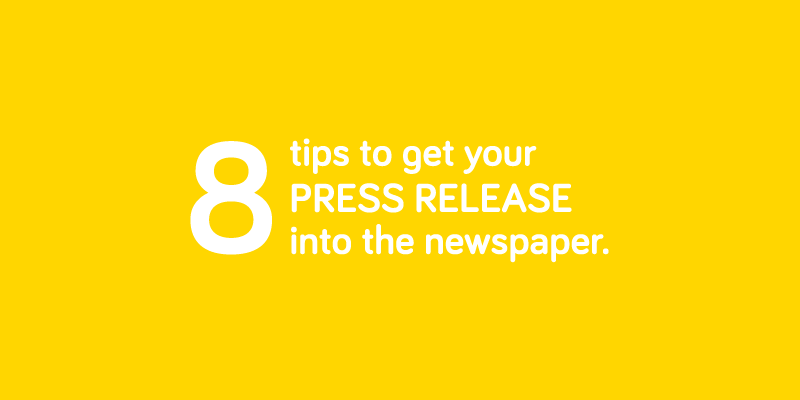Remember that when it comes to print, editors have a certain amount of space that they need to fill, and if an advertiser drops out or another story falls flat, they will be grateful to get yours, but you’ll need to make their lives easier. This is where our 8 tips come in handy.
1. What, where, who, why and when
When you write your press release make sure that you include all of the relevant information. If you include the 5 ‘W’s of the story, providing the editor with a well written piece that doesn’t require much editing, then you have a better chance of getting your story into the paper. Don’t forget the obvious! You need to refer to what the story is about, where it takes place, who is part of the story, why it’s of interest and when it happened. Tell the whole story but make sure that the most important information appears in the first paragraph.
2. Spell check
This feature is available on all computers and programs – so use it! Make sure that American spelling doesn’t sneak in. It looks very unprofessional if your press release is riddled with spelling mistakes. Common mistakes are words such as your and you’re, there and their and affect and effect. This can be very embarrassing for you as it shows lack of attention to detail and if you’re trying to show your professionalism, it says the complete opposite.
3. Grammar check
Checking your grammar is a little harder, but it is critical. Correct grammar not only makes the press release flow better, but it shows that you can communicate correctly and saves the editors a lot of wasted time trying to fix up your sentences that don’t sound correct. If your press release is poorly written, the editor will likely put it in the too-hard basket.

Every good story needs a compelling image. Always include a high-resolution photograph, or even better, supply two.
4. Include quotes
Including quotes from key characters in the article adds interest and a human element to your story. Having an eyewitness or someone who can back up your story also adds credibility. This is also a great way to break up the story and add different perspectives. Adding quotes means that the journalist doesn’t have to track down people to get quotes from them – it’s already done and you’re one step closer to getting your article published.
5. Supply high-resolution images
Every good story needs a compelling image. Always include a high-resolution photograph, or even better, supply two. If it’s high resolution they will be able to use it in print, but if it has been taken off the internet, it won’t print well, so they won’t include it. If you give them a choice of photos, it means that you have a better chance of getting your story in as they can fill space with more images if they need to. Also, supplying photographs means that they don’t need to send a photographer out which, when they have a deadline looming, could be the difference between your story running or not.
6. Include a photo caption
Most people forget this part. Include a caption for the photograph or at least add a note stating who is in the photo as seen from left to right. This lets people who are reading the article know who is who and makes it far more personal and connected.
7. Contact details
Once you have written your article, don’t forget to add your name, business name, position, phone number and email address to the end of the press release. This will make it very easy for the editor or journalist to contact you if they need additional information or need to clarify facts.
8. Answer your phone
Last but not least, make sure that after you have sent the press release that you have your phone on you at all times in case the newspaper, magazine or radio decides to give you a call. If you are available, you will be the one that they call in the future to comment on events or to even get onto the radio to be an industry expert. Remember, that when a paper is close to a deadline, the staff are not clocking off at 5 pm, make their lives easy and be accessible.
Written by branding specialist Debbie O’Connor
Consultant, Strategist, Keynote Speaker




